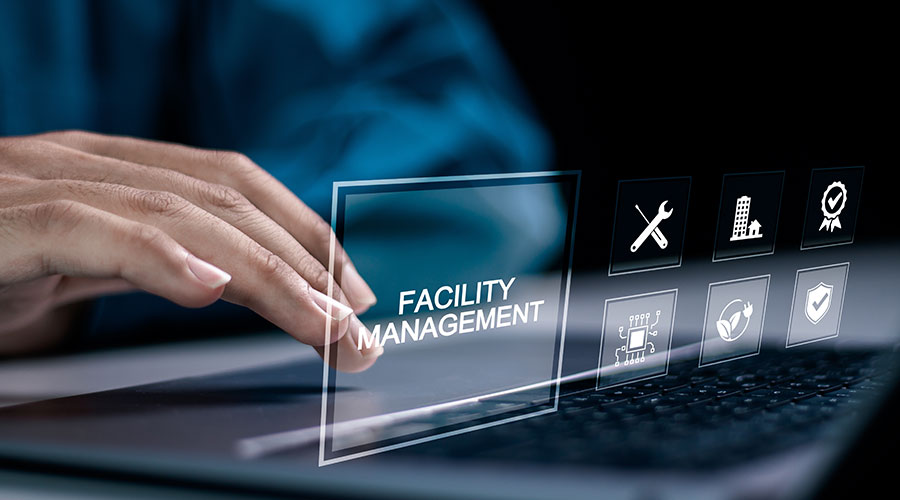Beyond Buzzwords: Lessons from Manufacturing
OTHER PARTS OF THIS ARTICLEPt. 1: This Page
I spend most of my time working in manufacturing facilities, and for years I've said maintenance and engineering departments in these facilities have developed many successful practices. Unfortunately, it seems to take years for these practices to migrate to institutional and commercial facilities. When they do make the move, the results tend to be mixed, at best.
Right now, I am engaged with a client in the manufacturing environment that has typical concerns — global marketing, escalating production costs, escalating maintenance costs, and a diminishing customer base.
At the same time, I'm working with managers in an institutional facility who have concerns of their own — building and infrastructure issues, new demands created by new construction, escalating maintenance costs, and an expanding customer base.
These two customers have many things in common, but what stands out in the case of the facilities customer is the gap between the managers' expressed interest in management strategies that have proven successful in manufacturing facilities and their ability to put those strategies into practice properly.
Identifying the Problem
Pick a buzzword related to manufacturing — lean, six sigma, reliability-centered maintenance, or 5S. Managers in the institutional organization love throwing around these words and phrases. They have embraced the ideas and the concepts. They are converted.
But the problem is they have never established the basics — the fundamental elements on which the above concepts are built and that are essential to ensure sustainability. While working with these managers, I was able to identify the root causes of their problems.
The department maintains about 250 buildings, ranging in age from new to more than 75 years old, that cover 2.5 million square feet. The areas of responsibilities include landscapes, roadways, refuse services, fire and police departments — essentially, a city within itself.
The department's maintenance staff consists of 300 personnel and about 40 maintenance-related supervisors who support the organization's 45,000 employees and tenants.
A computerized maintenance management system (CMMS) is in place, as is a maintenance-planning function, and all planners have received formal training. A reliability engineering staff also is in place to mitigate recurring failures, and a preventive maintenance (PM) program covers most of the organization's assets.
The managers have all the right elements in place to execute proactive maintenance, right? One would think so, but the department tackles most activities reactively.
In discussions with the maintenance planners, it became clear they were accomplishing less than 15 percent of the work they are trained to do. They had been banished to managing projects, expediting parts, and printing PM work orders that had come due.
Their reporting structure also had changed, so they now report directly to the reliability engineer, who had abandoned all reliability efforts and focused on projects instead.
As a result, repetitive failures in their facilities had become common. Technicians routinely accomplish PM procedures with 60-70 percent compliance, and deferred maintenance continued to climb, due to issues related to budgeting and staffing.
Down to Basics
You're probably thinking, the problem is easy to figure out. But you have to dig deeper to really see what's going on here.
In performing my due diligence, I started posing questions and asking to review key items — mostly the basics, such as information on work-management flows. These flows did not exist, managers told me. To my surprise, they said everyone in the department knew what had to be done. I tried to educate and persuade, and even demand that these kinds of strategies were necessary, but the managers believed this process was a waste of time.
Then it hit me. I needed to show them just how critical this kind of information was. I invited the department's leadership team to observe a simple exercise involving their maintenance supervisors.
I assembled all 40 supervisors and gave each one a sheet of paper with a simple paragraph regarding a given activity. The instructions were simple: Write down the way a technician should accomplish the task, people the technician should interface with, and the way the technician should update the relevant support systems — CMMS, managers, etc.
Upon completing the task, each supervisor stood up and read his or her description out loud. By the time half of the supervisors had completed the exercise, a pattern emerged: No two descriptions were the same. Then the leadership team caught on.
I am pleased to report the managers have begun developing work-management work flows. But imagine if each maintenance technician had continued to use his or her own way of performing maintenance activities.
Embracing Change
Did this exercise address all of the organization's issues? Not by any means. But this exercise was a good place to start as a way to get everyone performing activities the same way and standardizing their approach. My challenge to you is perform the same activity in your organization.
Remember, I said practices, both good and bad, often migrate from the manufacturing environment to the facilities environment. The challenge for managers is to head off this bad practice — failing to pay attention to the basics — before it takes root in the organization.
I am a strong believer in management strategies that maintenance and engineering departments can adapt from the manufacturing environment to benefit their organizations, such as lean, six sigma, reliability-centered maintenance, and 5S. But organizations will only be able to take full advantage of these strategies once they establish the basics.
Agree? Disagree? Have something to say? We want to hear from you. Visit myfacilitiesnet.com/members/DaveB/default.aspx, and "Start a Conversation."
Dave Bertolini is a managing principal with People andProcesses Inc., a firm specializing in changing cultures fromreactive to proactive through theoptimization of people andprocesses. He has more than30 years of experience inimprovement initiatives.
Related Topics:











